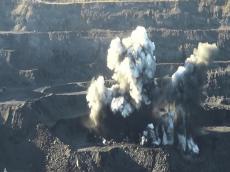|
|
TODAY.AZ / Politics
Nearly 200 anti-personnel mines found in Azerbaijan’s freed territories
24 November 2025 [18:21] - TODAY.AZ

By Qabil Ashirov
Weekly data on mine-clearance operations conducted in the liberated territories has been released for the period 17–23 November 2025.
According to the information provided to Azernews by the Azerbaijan Mine Action Agency (ANAMA), a total of 199 anti-personnel mines, 35 anti-tank mines, and 2,464 pieces of unexploded ordnance (UXO) were detected across Tartar, Aghdam, Aghdara, Lachin, Fuzuli, Shusha, Khojaly, Khankendi, Kalbajar, Khojavand, Jabrayil, Gubadli, and Zangilan. Clearance work was also carried out in the recently liberated villages of Baghanis Ayrim, Ashagi Askipara, Kheyrimli, and Gizilhajili in the Gazakh district.
In total, 1,527.4 hectares of land were cleared of mines and unexploded military munitions during the reporting period.
Azerbaijan remains one of the world’s most mine-contaminated countries, a legacy of decades of conflict with Armenia. Rough estimates suggest that about 1.5 million landmines and unexploded ordnance (UXO) remain scattered across former conflict zones.
Minefields cover a substantial portion of Azerbaijani territory, the United Nations estimates contamination across roughly 11,258 km², though only a fraction has been cleared so far. During the occupation periods, mines were deliberately placed not only in military zones but also in civilian infrastructure: roads, power lines, cemeteries, homes, and even cultural sites. During the occupation periods, mines were deliberately placed not only in military zones but also in civilian infrastructure: roads, power lines, cemeteries, homes, and even cultural sites.
The human toll has been heavy. Over 3,400 Azerbaijanis, including hundreds of children and women, have been harmed by mine explosions since the start of the conflict. Since the 2020 war, dozens more have died or suffered severe injuries. Clearing these mines is a massive and ongoing challenge. Azerbaijan’s national Mine Action Agency (ANAMA) leads demining efforts, often using advanced methods like drone surveys and remote sensing. According to recent data, around 746 km² of hazardous areas had been released by March 2023, but that accounts for only about 9% of the total suspected contamination.
A major obstacle is the lack of detailed minefield maps. Armenia has not fully shared data on where mines were laid, complicating demining efforts and raising safety risks. The mine issue also slows post-war development and delays the return of displaced Azerbaijans. In response, Azerbaijan has made humanitarian demining a high national priority, even declaring it the 18th National Sustainable Development Goal.
URL: http://www.today.az/news/politics/263681.html
 Print version
Print version
Connect with us. Get latest news and updates.
See Also
- 24 November 2025 [18:21]
Nearly 200 anti-personnel mines found in Azerbaijan’s freed territories - 24 November 2025 [16:32]
Azerbaijani Parliament Speaker meets Slovak Ambassador - 24 November 2025 [15:13]
Azerbaijan congratulates Turkiye and Australia - 24 November 2025 [14:41]
ANCA recruits odious senators against Azerbaijan: Signatures for signatures' sake - 24 November 2025 [14:38]
Azerbaijani justice minister attends international conference in Saudi Arabia - 24 November 2025 [14:14]
Memorial anniversary of the "observers" in Armenia - 24 November 2025 [11:54]
President says coordinated Turkic World NGOs can greatly advance national objectives - 24 November 2025 [11:44]
President Ilham Aliyev addresses to participants of NGO Solidarity Forum of OTS countries - 24 November 2025 [11:34]
President: Growing potential of Turkic states requires establishing more flexible mechanisms - 23 November 2025 [12:55]
Sabotaging Peace: Voices in Yerevan prefer conflict to compromise
Most Popular
 British parliament hosts landmark launch of the Eurasia Policy Council
British parliament hosts landmark launch of the Eurasia Policy Council
 Azerbaijan brings together NGOs of Turkic States for first time
Azerbaijan brings together NGOs of Turkic States for first time
 OpenAI launches ChatGPT group chats worldwide
OpenAI launches ChatGPT group chats worldwide
 Uber launches robot deliveries in UK
Uber launches robot deliveries in UK
 President Ilham Aliyev attends inauguration of pharmaceutical production facility
President Ilham Aliyev attends inauguration of pharmaceutical production facility
 President Erdogan plans to meet his Russian counterpart to discuss Ukraine
President Erdogan plans to meet his Russian counterpart to discuss Ukraine
 COP29 achieves worldwide recognition for its breakthrough climate outcomes
COP29 achieves worldwide recognition for its breakthrough climate outcomes
